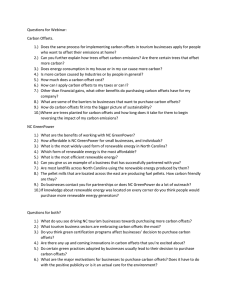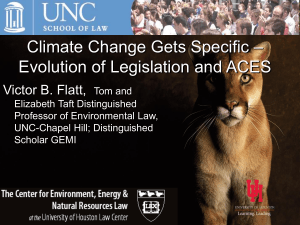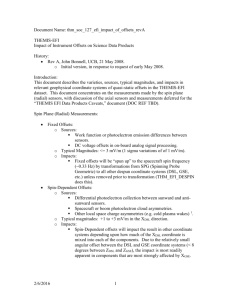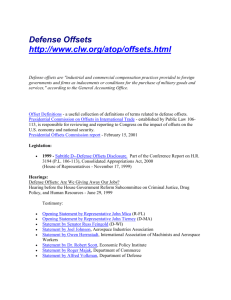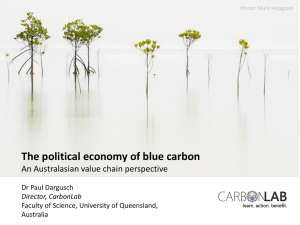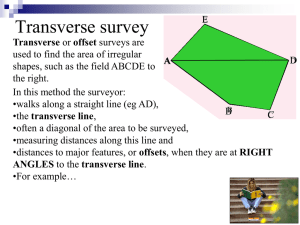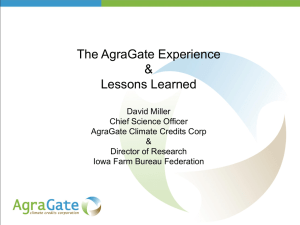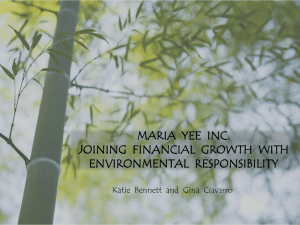Joel Levin - Cap and Trade
advertisement
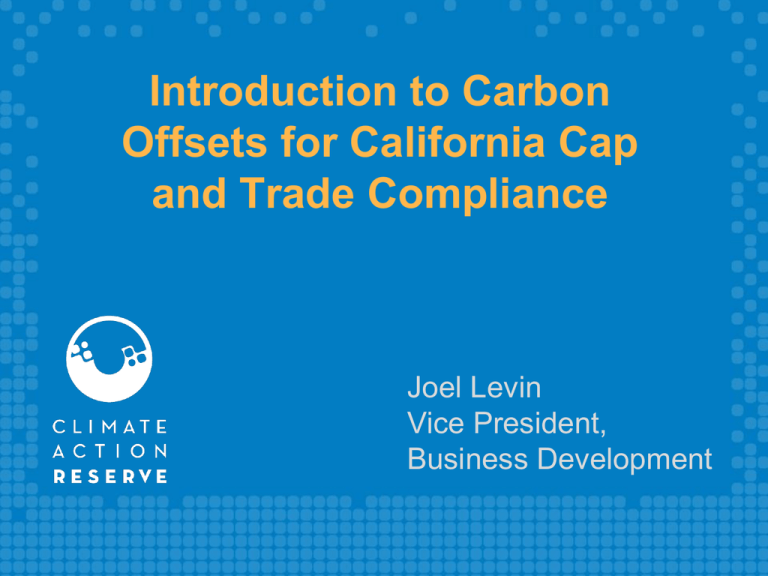
Introduction to Carbon Offsets for California Cap and Trade Compliance Joel Levin Vice President, Business Development Using Offsets for Compliance • Compliance obligation can be fulfilled with a mix of allowances and offsets • Up to 8% of obligation can be met with offsets • Example: If your facility generates 100,000 mtCO2e, you can use up to 8,000 offsets • Do you have to use offsets? • No, they are an option. People use them because they are usually cheaper than allowances 2 What Offsets are Acceptable for Compliance? • Offset project must be done according to an approved protocol – Four Climate Action Reserve project protocols have been adopted by ARB • Project can be located anywhere in the United States • Offset must be issued by an ARB-approved registry – The Reserve expects to be formally approved by ARB as an Offset Registry in Fall 2012 3 So who is the Reserve? • Nonprofit organization founded by state legislation in 2001 to develop standards for GHG accounting • Originally named California Climate Action Registry • Renamed and expanded in 2008 to focus on carbon offsets – Develop standards for offsets – Oversee projects and ensure their integrity 4 Compliance Protocols • Forestry: biological sequestration in forests for 100 years – Improved Forest Management – Reforestation – Avoided Conversion • Urban Forestry: sequestration in urban tree plantings for 100 years • Livestock: capture and destruction of methane from manure using anaerobic digestion • ODS: destruction of potent GHGs from appliances and foams from U.S. sources 5 Reserve Stats CRTs registered 28 million CRTs registered (CARB 10 million compliant) Account holders 384 Projects submitted 478 Projects registered 153 U.S. States with Projects 45 6 California Offset Demand Compliance Period Year First (narrow scope) Second (broad scope) Third Allowance Budget (mt CO2e) 2013 162,800,000 2014 159,700,000 2015 394,500,000 2016 382,400,000 2017 370,400,000 2018 358,300,000 2019 346,300,000 2020 334,200,000 Total Offset Demand 25,800,000 91,784,000 83,104,000 7 CRT Issuance Projections 8 8 Buyer Liability • CARB may find that an offset is invalid if: – Amount of credits is overstated by more than 5% – Project is not in accordance with all local, state, and national environmental, health and safety regulations during reporting period – Credits have been issued by another program for the same period • If found invalid: – For forestry, CARB will require forest landowner to replace credits. – For other project types, CARB will remove the offsets from the account where they are currently located, whether retired or active 9 Buyer Liability - Time Frame CARB can find credits invalid within eight years, except: • For Livestock, Forest and Urban Forest, liability is only for three years if the project is verified by a different verifier within three years. • For ODS, liability is only three years if it is reverified by a second verifier within that time. – ODS projects have only a one-year crediting period 10 Strategies Companies are Using for Invalidation Risk • Be sure your projects trigger the three-year cap • Conduct due diligence on project, developer and registry • Have contract specify that seller will indemnify you if offsets are invalidated—and have mechanism to ensure compliance • Forward contract for offsets after three-year cap has expired (or at least run down a bit) • Purchase a mixed portfolio of projects • Buy forestry 11 Three things to remember about offsets • Offsets are a useful tool to reduce compliance costs, but they require forward planning • Buyer liability is a manageable risk • In a world of buyer liability, the work of offset registries matters. A diligent offset registry helps to reduce your risk 12
